- News
- Reviews
- Bikes
- Components
- Bar tape & grips
- Bottom brackets
- Brake & gear cables
- Brake & STI levers
- Brake pads & spares
- Brakes
- Cassettes & freewheels
- Chains
- Chainsets & chainrings
- Derailleurs - front
- Derailleurs - rear
- Forks
- Gear levers & shifters
- Groupsets
- Handlebars & extensions
- Headsets
- Hubs
- Inner tubes
- Pedals
- Quick releases & skewers
- Saddles
- Seatposts
- Stems
- Wheels
- Tyres
- Tubeless valves
- Accessories
- Accessories - misc
- Computer mounts
- Bags
- Bar ends
- Bike bags & cases
- Bottle cages
- Bottles
- Cameras
- Car racks
- Child seats
- Computers
- Glasses
- GPS units
- Helmets
- Lights - front
- Lights - rear
- Lights - sets
- Locks
- Mirrors
- Mudguards
- Racks
- Pumps & CO2 inflators
- Puncture kits
- Reflectives
- Smart watches
- Stands and racks
- Trailers
- Clothing
- Health, fitness and nutrition
- Tools and workshop
- Miscellaneous
- Buyers Guides
- Features
- Forum
- Recommends
- Podcast
news
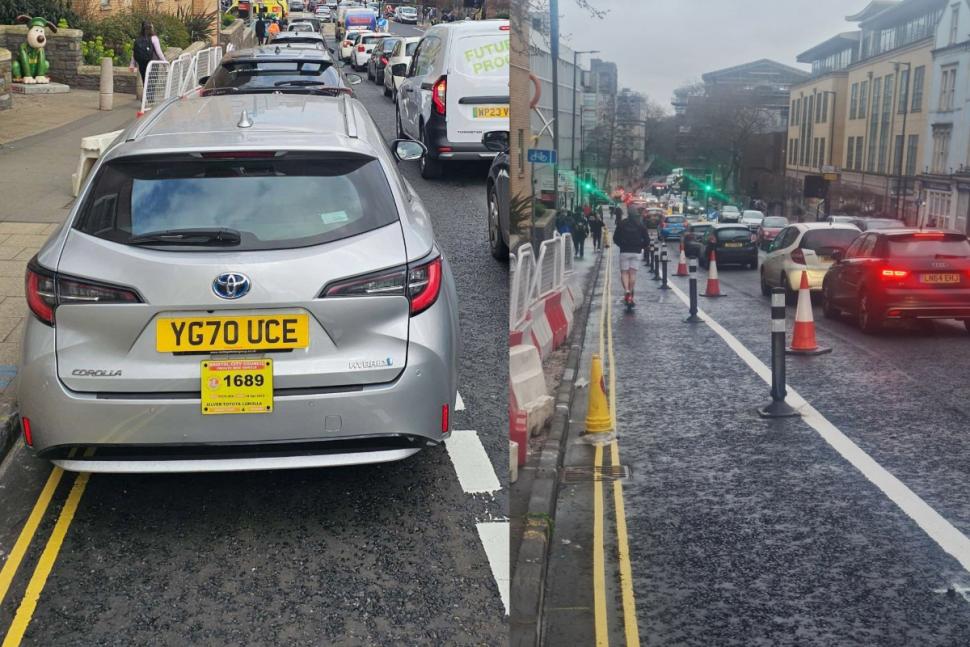 Parking in bike lane on Upper Maudlin Street, Bristol (credit: FixMyStreet/George Holland)
Parking in bike lane on Upper Maudlin Street, Bristol (credit: FixMyStreet/George Holland)Bollards installed on new cycle lane outside hospital after drivers immediately block it
Bristol City Council acted quickly to place bollards on a cycle lane outside a hospital in the city, that after the newly installed cycling infrastructure was immediately blocked by drivers' parked vehicles.
The situation unfolded on Upper Maudlin Street, outside Bristol Royal Infirmary, after local cyclists quickly complained that a new painted cycle lane was soon unusable due to the number of parked vehicles in it, a video shared on social media showing the extent of the parking.
One rider George Holland, who filmed and shared the video online, wrote: "Lovely new cycle infrastructure outside the Bristol Royal Infirmary. Was so optimistic. Instant parking area."
Prior to the cycle lane there had been a temporary bus stop, disabled parking bay and taxi bay in the road space where the cycling infrastructure has now been installed, the image below showing how the street looked in October 2024.
However, despite the double yellow lines and cycle lane running through that space now, not much has changed in terms of the roadside picture, the route still dominated by parked vehicles.
One person who reported the issue to the council wrote on the FixMyStreet portal: "The new bike lane is blocked which is a hazard to cyclists. Some of these cars have Blue Badges. Additional signage should be added on this main route to prevent any cars parking here. Perhaps a no loading/no stopping at anytime sign with regular enforcement. If this is not done, a cyclist will be seriously injured or killed."
Another added: "Cannot use cycle lane due to parked cars all along road — would bollards be possible? Feels unsafe cycling in this area. Love the addition of the cycle lane but unfortunately ruined by disrespectful car users."
Local rider Holland, who shared the initial video, admitted it was "not an easy equation to balance" as some of those parking in the lane are Blue Badge holders or dropping off vulnerable patients to the hospital. However, others suggested this needed to be addressed by the hospital and council without putting cyclists using the infrastructure at risk.
Ultimately, the council has now responded to the parking complaints and quickly installed bollards to segregate the route from traffic, another image posted on social media now showing the infrastructure clear.
Dan is the road.cc news editor and joined in 2020 having previously written about nearly every other sport under the sun for the Express, and the weird and wonderful world of non-league football for The Non-League Paper. Dan has been at road.cc for four years and mainly writes news and tech articles as well as the occasional feature. He has hopefully kept you entertained on the live blog too.
Never fast enough to take things on the bike too seriously, when he's not working you'll find him exploring the south of England by two wheels at a leisurely weekend pace, or enjoying his favourite Scottish roads when visiting family. Sometimes he'll even load up the bags and ride up the whole way, he's a bit strange like that.
Latest Comments
- Jbnuts 1 hour 29 min ago
I did similar. I found a Mapei-finished C59 disc frameset online and proceeded to build what I hoped would be a fantastic Colnago. It turned out...
- stonojnr 4 hours 56 min ago
exactly, thats my issue, how does knowing the speed, then change the perspective of a close pass ?...
- Dnnnnnn 5 hours 30 min ago
On the subject of value, it's also worth mentioning the discount available through Cycling UK and British Cycling? I also spotted 10% off at...
- NPlus1Bikelights 5 hours 53 min ago
We've saved them multiple times with Kick Starters. Shame. Edit: tense.
- NPlus1Bikelights 5 hours 56 min ago
Or the congregation reads the news and does not like all the stories about ignored abuse by senior members of the church.
- NPlus1Bikelights 5 hours 58 min ago
Kask remains sexier. And their prices, whilst high, are not as over the top as these.
- rookybiker 6 hours 20 min ago
> Are the ASO, basically saying it didn't happen The authority is the UCI. ASO was only the race organiser.
- brooksby 7 hours 32 min ago
I have a Grand Prix appointment next week anyway, so I may decide to discuss this with them instead of what I'd booked it for...
- David9694 7 hours 34 min ago
Come with me to Brockenhurst, New Forest. It has a train station and a bike shop and in the summer season the area attracts visitors, many of whom...
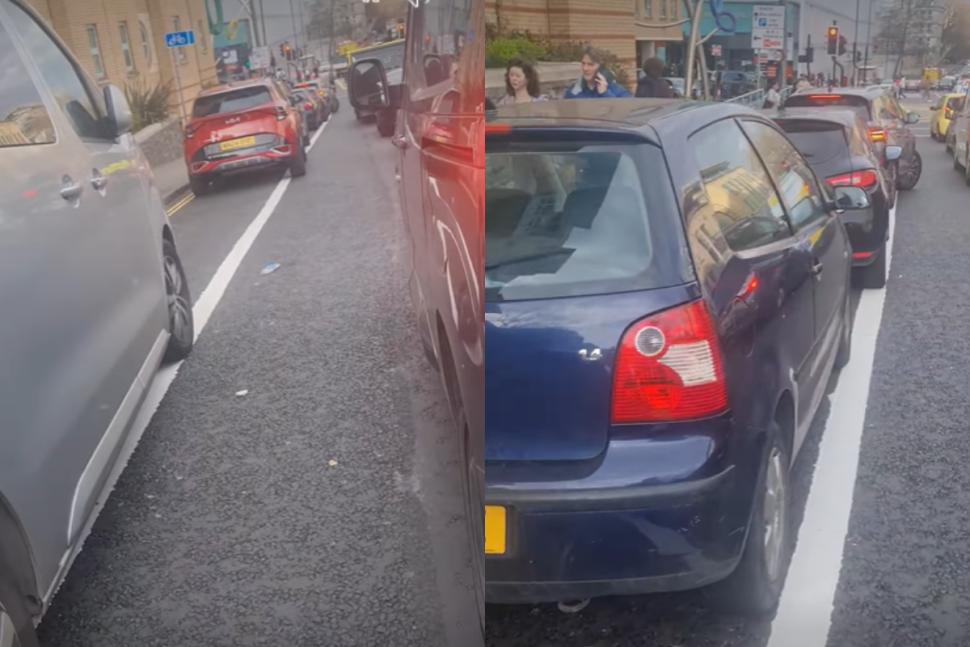
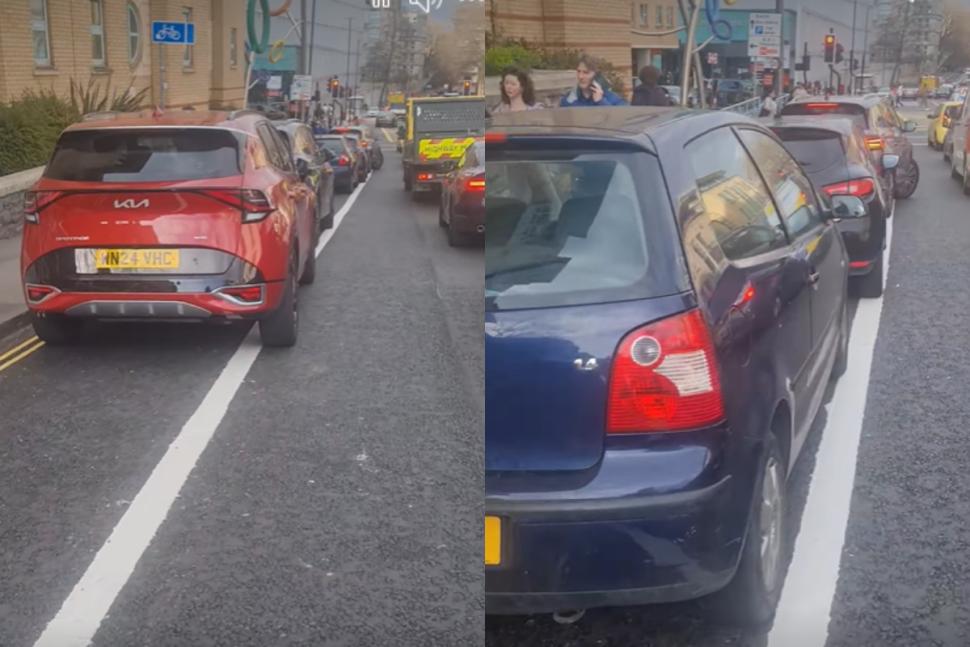
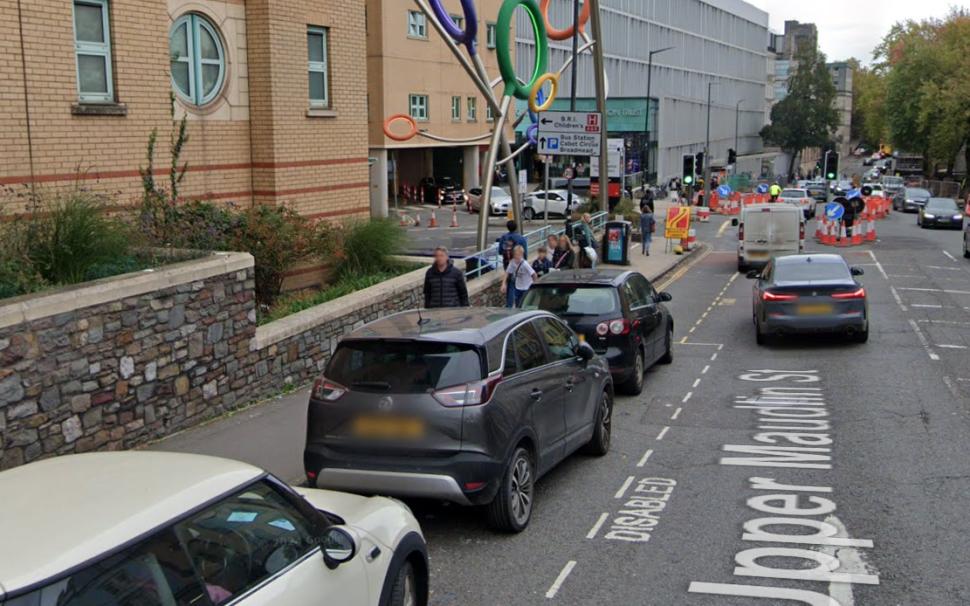

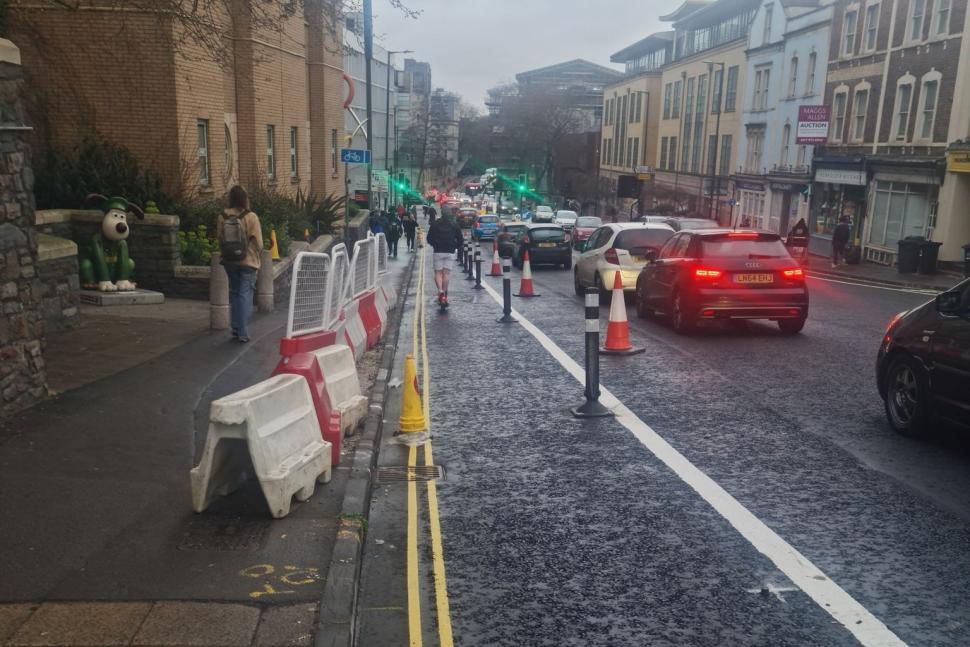
Add new comment
35 comments
Praed Street Paddington had wands installed after taxi cabs parked in the cycle lane, now the taxis still park in the cycle lane, inside the wands.
Hospitals are journey generators - typically 30,000+ trips per day for a big site, with a woeful assumed need to get there by private car failing to recognise the massive costs in land & pavement to store empty cars for 40+ % of the day (& lie almost empty overnight) whilst sites are actually close to frequent all day rail or bus services, or could easily be reached on foot or bike if the place wasn't swamped by cars, or on an out of town site for a 'new hospital that ignored the options of making it easy to catch buses, trains or walk/cycle there
Just count the illegally parked & obstructive cars on a short (4-10 min) walk from the main entrance of a local hospital to the rail station, with 24+ trains/hr 06.00-00.00
So many places are under 0.5Km from good bus or rail routes. Fix this and you'll start to fix the parking issues?
https://www.flickr.com/photos/h52/albums/72177720316842839/
You inspired me to do a bit of map-checking. I've barely been to half-a-dozen of Scotland's hospitals (I try to stay away...) and have cycled to less. Just looking at the bigger cities (sorry Dundee, I ran out of time):
Edinburgh's hospitals are within the city - though the Royal is "just".
Royal infirmary - about 30 min to centre by bus. But ... 16 min by car says Google (and 19 by bike, not nice though). There are 3 railway stations at about 3 miles' distance, but only one is "main" e.g. Waverley.
Western General - a bit nearer - 20 min to same point and 13/15 min by car/bike (slightly less unpleasant than the Royal). 2 - 2.5 miles to railway stations.
Glasgow - by far the best (it also has far the most urban rail of any Scottish citie, plus the metro) and "not bad"...
Hyndland/Gartnavel is probably the closest - about 100m away. Or New Victorial / Mount Florida.
QE University hospital is not too far from Cardonald, same with Golden Jubilee National Hospital / Dalmuir.
For the rest: don't think any hospital is exactly "served" by rail. The Royal is closest to the centre - but closest station is High Street (300m).
Livingstone (just because I've been) - not near the station, though the hospital is relatively central to the connurbation. Being a "new town" Livingstone actually has some interesting "demonstration cycling city" cycle infra, but it's not exactly "convenient" and is a bit unloved. Also being a "new town" it has a grid of "urban motorways": guess what, it's a "car town".
Inverness - you'll probably not be cycling to Raigmore although e.g. there's a shared use path along the A8082 (I have done it), and it's not really "on the train"...
Aberdeen - have only ever passed through really. Hospitals within city.
Distances are similar to Edinburgh/Western general - although cars are even better served according to Google's times! (Aberdeen is also a car town I think?)
I think Livingston (no "e") has the best cycling infrastructure I have seen in Scotland. It has an extensive network of paths that are actually joined up, and you can pretty much get anywhere in the town via an off road route. I have not visited any other Scottish towns where you can do that (I don't know Cumbernauld or East Kilbride very well, so they might have something similar). Livingston may be a "car town" (show me a Scottish town that is not a car town...) but if you actually want to get about by bicycle without encountering those cars, that is very feasible.
Edinburgh, by way of contrast, has a number of main arterial paths, but almost all of them eventually dump you back on a main road, or rely on networks of back streeets to provide the linking sections (if they even exist). The Edinburgh cycling infrastructure is poorly integrated, a lot of of it is badly maintained, and some of it is downright dangerous (Haymarket, for example).
I haven't cycled in Livingston (sorry) for a couple of years now, but I remembered it as a place with an extensive network of footpaths you could cycle on. A quick Streetview tour confirmed that.
The pros - there is grade separation in places (which is good, if done well). Some paths are quite reasonable width (though some are more "alleys").
So I'd say that yes - you can get many places without riding on the roads. That is quite something in the UK! But on the scale of crossing the town it is lacking convenience (and not good for social cycling - although that's lacking almost everywhere in the UK). Shared use, the width often poor, you may need to go "round the houses", "down and up" and/or wait to cross roads busy roads.
It reminds me of the "Milton Keynes" new town infra style (although MK has wider spaces for cycling - but still shared use I think?) Possible to cycle (if you don't mind a ramble / are a pretty good navigator). But excellent for driving (like Carlton Reid's article on Stevenage).
I can hardly defend Edinburgh - what you say is largely true - but ... in fact living in the North West there is an actual network (just...) which is direct and allows me to access many destinations cycling at a good pace. In fact this covers several miles. It's not what it should be as it's shared-use former railway path but it's reasonable width and is not normally heavily used by pedestrians. It has been recently extended (albeit the council now want to break it again to fit in "tram-as-urban-light-rail" (sigh).
What is perhaps different is that not being a New Town the motor traffic in Edinburgh is somewhat self-limiting at least in speed - due to both capacity / demand and traffic lights, buses etc And there has been wide application of 20mph limits.
And (ignoring the Leith Walk tram company nonsense) Edinburgh has some recent genuine "would be recognised in Europe" separate (from cars AND pedestrians) cycle paths along main roads (e.g. Wester Coates to Haymarket on the - unfinished... - CCWEL). A tiny amount, true, and junction treatments aren't yet much further than "cyclist advanced release lights".
As for "rely on networks of back streets" don't forget that the bulk of the Dutch cycling network is in fact on streets. (However "just use the roads" proponents should note that this is, and takes, infra - specifically a raft of measures to drastically reduce motor traffic and slow that which remains).
All paths in Livingston are officially designated for cycling use:
"In 1987 legislation was passed to enable the footpaths in Livingston to be used for cycling except at identified footbridges where cycling is prohibited for safety reasons...There are 144mls (230km) of traffic free walking and cycling routes"
https://livi20milers.blogspot.com/p/livingston-cycle.html
The Livingston 20 milers also claim it is possible to cycle from anywhere in Livingston to any workplace in 20 minutes which might be a bit ambitious but is not too much of a stretch. It's nowhere near Netherlands standard, but it is a very useable network of paths, and it is sadly way ahead of anywhere else in Scotland.
I have done a fair bit of cycling in the NL, and cycling on their non-segregated paths is completely different situation from the UK. As you say, those non-segregated routes are still engineered for easy cycling, they integrate seamlessly with dedicated cycle routes, they go directly to where you want to go and the drivers sharing the streets understand how the system works and treat cyclists respectfully (because they are cyclists themselves). The UK on-street links are just convoluted backstreet routes with blue signs.
Not knocking Livingston - and no doubt I would get around fine living there. But ... as a lifetime UK cyclist I'd probably do that most places. (Although some years of having some on-balance-pleasant motor-traffic-free and road-noise free paths in Edinburgh may mean that I'd now struggle to adapt to e.g. Grimsby...)
Although I get a lot of benefit from the local shared use paths, ultimately that is not going to advance the plot much. As demand increases it ends up making it less pleasant and convenient for cyclists and pedestrians - which in the UK means the (currently few) cyclists are the baddies again!
To persuade people to change requires both push and pull. The pull - is pretty poor. Where we do provide for active travel we're still doing "safety at the price of convenience". (Because "there isn't money or space" - which is really "we can't threaten the effective subsidies for the motorists"). It's clear that cycle trips still compare poorly relative to ease of driving somewhere. (We'll provide for "recreational" cycling though - that's much easier as those paths don't have to go to destinations and where the cars go already!)
The push is absent most places. It's really easy to drive - we still have requirements for journey times which effectively prioritise driving, capacity requirements, parking provision requirements...
Ultimately it's about the big choices about how we want our places to be, and "it's the network". As you say in NL there is a generally seamless network of routes, on or off dedicated infra. (But all supported by all kinds of infra). The key places (junctions) are dealt with. And increasingly Dutch planners seem to be looking to improve convenience and capacity for active travel by thinking about separate grids at the network level (thus avoiding the bottlenecks of junctions entirely). And limiting or sending the motor traffic elsewhere.
* Actually on examination the cycle infra isn't really "excellent" in terms of convenience - certainly not the same way that much Dutch infra is (even the older parts).
Meanwhile, in the Netherlands... (cycling to hospital, s''Hertogenbosch, Utrecht. Cycling to hospital and cycle parking, Assen).
I did do some hospital visiting by bike while down in Peterborough some years back. Mostly as a challenge. It was certainly possible (as someone who's been cycling in the UK all my life). I doubt I would ever have cycled on the main Lincoln Road / Wherrington Parkway, but there happened to be alternatives. In fact there was quite a bit of interesting old ?70s cycle infra, some not bad at all (by UK standards).
Still a magical mystery tour though. Meanwhile the Hospital is ideally situated for driving, being on the ring road. It is served by buses - I didn't try those. Station? Nope.
Taxis doing what they want where they want when they want: unusual...
"Taxi DRIVERS doing what they want where they want when they want: unusual..."
Unless the vehicles were self-driving/autonomous...
http://rc-rg.com
Even Grommit has the sense not to sit in the cycle lane or on the pavement.
If car drivers only had the common sense of Grommit.
I had to walk past my old stomping ground on Park Row the other day, which is the western end of this same scheme (Marlborough Street by the BRI, Lower Park Row, and Park Row). Mandatory cycle lane and double yellow lines, but no bollards. And a big white SUV parked outside the Greek pastry shop...
Would a D-lock fit through the wheel?
The next big problem to be tackled in my opinion along with pavement parking. The problem is, if I have understood correctly, that police can't enforce unless they witness a car causing an unneceesary obstruction (video evidence is not acceptable) and the council officers can only issue tickets if they witness a parking infringement (video evidence is not acceptable). In Gloucestershire the police won't even enforce driving on the pavement or in a compulsory (solid white line) cycle lane from video evidence unless the video shows that someone has been inconvenienced.
Why this should be the case is anyones guess but the likely reason is that politicians feel that sorting it out will lose them votes. It's the one area left where selfish behaviour, which potentially harms others, is acceptable to the public. Even smoking was sorted out eventually.
The whole thing is a mess and it's pedestrians, cyclists and, worse of all, wheelchair users who suffer.
Absolutely, had a conversation with the PC that can't do anything about it after I have loads of photos of it in Gloucester.
I'm so frustrated and I only commute that way once a week.
This guy parks on the double yellow shouldered kerb every single day.
Just squirt some thick grease all over his side windows and door panels. If you're feeling really uncharitable you could throw some sand at the door panels as well.
Grease on the windscreen next and superglue the wipers.
Using superglue anywhere on the vehicle would be considered as causing damage so that would be an offence. I don't think spreading grease over the car windows would count as an offence as it's not damage as such.
I'm sure the whole lentil-in-the-valve deflation trick isn't technically criminal damage either.
No but it would be interfering with a vehicle.
The key is not to get caught. I'm getting to the point where I have no fucking sympathy for drivers. They behave like (unironically) entitled cunts while they whinge bitterly about cyclists and the pittance that is spent on crap infrastructure for us.
They put our lives and health in constant danger. They park where they want with no consequence. They pollute the air horribly and the chance of a bad driver actually being punished is close to 0 despite their victim complex.
If they can't take even the slightest consideration for people walking, pushing prams, cycling or in wheelchairs then fuck em. Their car gets damaged.
There is CCTV in very many places in the UK. A charge of criminal damage wouldn't look good for job prospects and would also make travelling overseas difficult. But grease on the windscreen or as The Little Onion suggested, a lentil under the dustcap, wouldn't count as criminal damage. They'd still be very, very inconvenient for an inconsiderate driver.
Legally, that would be criminal damage too. Mud on a wall has been held to be damage as has a chalk drawing on a pavement that would be washed off when it rained.
Perhaps keep an eye on this:
Nice idea but Gloucestershire Constabulary are not interested as exemplified by this prvious NMOTD. Not only was there NFA for the close pass in bad weather with a poor road surface but no action on the lack of tax.
https://road.cc/content/news/nmotd-630-police-explain-why-punishment-pas...
In fact someone local videod the car around 6 months later and it still wasn't taxed.
Perhaps keep an eye on this: CA62 KNK
Pfff! Chicken feed. Lancashire Constabulary ignore years without MOT, on the road with MOT failed for 'do not drive until repaired dangerous defects', several years without VED etc. MV07 WWG was observed and reported on 10.3.25 after so failing MOT on 23.1.25- the vehicle was then driven illegally and 'dangerously' for another 1500 milles before passing MOT on 31.3.25. BF64 TGE is shown here outside the owner's home on 25.3.25- no VED since 1.12.21. First reported to Lancashire police and DVLA in May 22. WU59 UMH- no VED since 1.12.17, first reported July 23 when it was described as 'stolen' on one of these car check websites and had been without MOT for 6 years then. The police and DVLA are inept and terminally idle.
You must keep a helluva spreadsheet somewhere, wtjs!
I did consider setting up an Access or Open Office database and/or spreadsheet, but the search facility in File Explorer linked to a text file with particular reported incidents in date order and records of consecutive reports to Lancashire Constabulary in an Outlook folder do the job more easily. I have a GoPro folder with subfolders in date order and have the whole folder indexed so I can locate specific keywords in the photo filenames - keywords such as NoMOTxl (extremely long!), RLJ, HHMP (handheld mobile) etc
Absolutely. Calculus - a lot of drivers (an even greater number of vehicle-users) times (say) a tiny fraction who sometimes say "sod it, I have to drive / park here" equals a great deal of potential opposition.
And given it isn't just a tiny fraction who do this, and that many see their use of their vehicle as "existential" e.g. supporting their dependents, for work, for getting to work... that opposition will be noisy.
Whereas ... I'm guessing the death and injury thereby caused is small enough to rationalise away. e.g. "that was just someone driving badly / they stepped out without looking". And the numbers of people who perhaps feel they can't take certain routes because they can't trust spaces to be clear? Also tiny.
Result - politicians pushing this are committing an "unforced error" in their opponents' eyes.
Frustratingly we could probably avoid (most of) this if only one or two fundamental things were the other way around e.g. "you can only drive on the street / road and only park where indicated". Other countries have demonstated this ... but "not here".
20 years ago the local shopping street was relaid in cut stone slabs. To minimise the paint to go down on the nice £££ stone, there was a "park only in marked bays" traffic order, instead of yellow lines - (you can park here vs you can't park there). The sheriff refused to enforce that as it was "unclear" and so... yellow lines were added everywhere.
Nowadays there's just no enforcement at all.
Pages